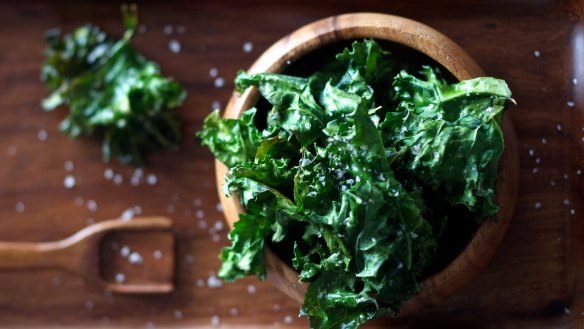Kale: superfood or super-villain? The case for eating kale

Kale is horrible stuff! R. Farrell
"Kale is one of those hoaxes perpetrated on the public as a superfood. Either that or its promotion was the product of a drunken joke dare that emanated from a marketing company's Christmas party." This was one of the scores of venomous anti-kale rhetoric dumped into our inbox after we published a letter from a reader expressing their dislike of kale. It resulted in an unprecedented deluge of kale hate mail, the likes we have never seen at the Brain Food Institute. One of the correspondents' main complaints was about kale's hard, chewy texture. But there's a reason kale is so tough – it has to be. It is a frost-tolerant plant that survives and remains edible even after being covered in snow. Kale was the dominant green vegetable across Britain and large swathes of Continental Europe before the development of the cabbage in the 1500s. In England, it was called "colewort". You'll see this "col" prefix appearing in many forms, from kohlrabi to cauliflower and coleslaw. In Scotland, "col" became kale or kail. Kale has developed a thick waxy coating called a cuticle to insulate the leaves from frost damage and stop water from collecting on the leaves, which would cause rot. When frost or snow falls, kale responds by turning starch to sugar to help stop its water-filled cells from freezing and rupturing. So cold-climate kale is sweeter than that grown in milder climes. Traditionally the harder outer leaves were fed to sheep and the softer inner leaves were used in the kitchen, finely sliced and added to soups and stews such as hearty barley and mutton soup. The Scots have a dish called rumbledethumps, made with potato, swede and kale. The waxy cuticle is oil-soluble, which is why it becomes soft and more palatable when dressed in a vinaigrette. And why Jill Dupleix advises readers to massage the oil into the leaves in her recipe for delicious kale chips. Kale was branded a superfood because it produces isothiocyanates, as do its cousins such as cabbage, broccoli and brussels sprouts. The consumption of these vegetables has been associated with lower incidences of diseases such as diabetes, cancer and other inflammatory ailments. If you are one of the anti-kalers, that is fine. But these are plants that have kept people healthy for millennia. Try to include one of its close cousins in your daily menu – it will do you the world of good.
Where can I get good black pudding? My supermarket no longer stocks it. H. Duncan
I grew up on black pudding made from industrial foods. My grandmother toasted slices of Weston's Tip Top white bread and slathered it in Golden Circle Pineapple Relish. This was topped with Castlemaine Black Pudding and slices of Kraft processed cheese, wrapped in foil and sold in a blue box. This was all toasted until the cheese bubbled and started to brown. It was sweet, salty, spicy and hot on the top and cold on the bottom. Today, I make a version for my own children, using middle-class artisan ingredients, including black pudding from Pacdon Park, made by northern Englishmen in the south of NSW. It's available nationally. Check the stockist list on their website, pacdon.com.au.
Send your vexing culinary conundrums to brainfood@richardcornish.com.au or tweet to @foodcornish
Appears in these collections
- More:
- Food
- Brain food
